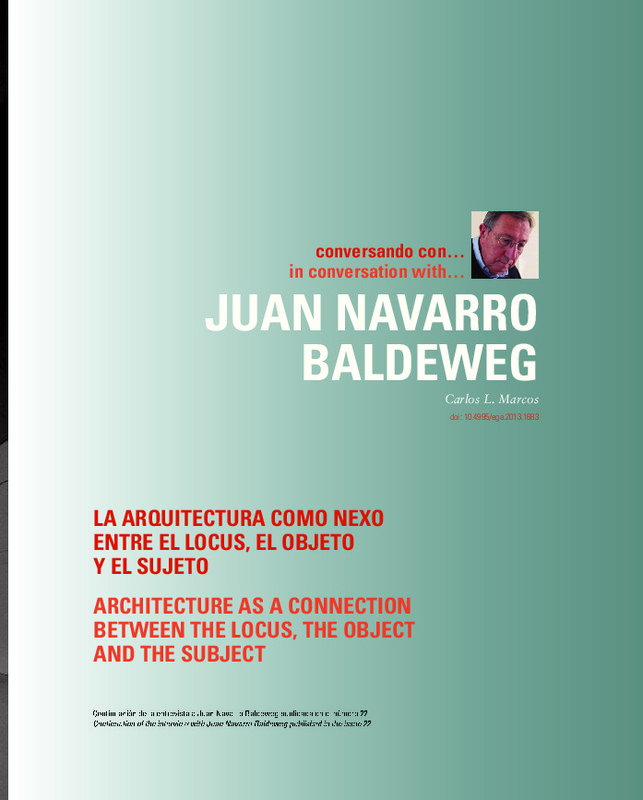JavaScript is disabled for your browser. Some features of this site may not work without it.
Buscar en RiuNet
Listar
Mi cuenta
Estadísticas
Ayuda RiuNet
Admin. UPV
Conversando con… JUAN NAVARRO BALDEWEG. LA ARQUITECTURA COMO NEXO ENTRE EL LOCUS, EL OBJETO Y EL SUJETO
Mostrar el registro completo del ítem
Marcos, CL. (2014). Conversando con… JUAN NAVARRO BALDEWEG. LA ARQUITECTURA COMO NEXO ENTRE EL LOCUS, EL OBJETO Y EL SUJETO. EGA. Revista de Expresión Gráfica Arquitectónica. 19(23):17-35. https://doi.org/10.4995/ega.2014.2805
Por favor, use este identificador para citar o enlazar este ítem: http://hdl.handle.net/10251/75877
Ficheros en el ítem
Metadatos del ítem
| Título: | Conversando con… JUAN NAVARRO BALDEWEG. LA ARQUITECTURA COMO NEXO ENTRE EL LOCUS, EL OBJETO Y EL SUJETO | |
| Otro titulo: |
|
|
| Autor: | Marcos, Carlos L. | |
| Fecha difusión: |
|
|
| Resumen: |
[EN] Continuation of the interview with Juan Navarro Baldeweg published in the issue 22. Juan Navarro Baldeweg’s architecture is unmistakably permeated by his plastic work; these pages invite us to dive into these contaminating ...[+]
[ES] Continuación de la entrevista a Juan Navarro Baldeweg publicada en el número 22. La arquitectura como nexo entre el locus, el objeto y el sujeto.La arquitectura de Juan Navarro Baldeweg está permeada por su obra ...[+]
|
|
| Palabras clave: |
|
|
| Derechos de uso: | Reserva de todos los derechos | |
| Fuente: |
|
|
| DOI: |
|
|
| Editorial: |
|
|
| Versión del editor: | https://doi.org/10.4995/ega.2014.2805 | |
| Tipo: |
|








